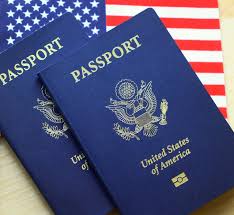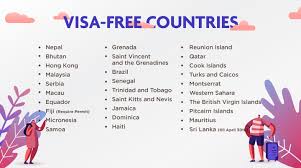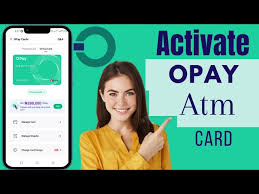How Long Does It Take to Get a United States Passport?
Obtaining a U.S. passport is a crucial process for U.S. citizens who wish to travel internationally. The length of time it takes to receive a passport depends on various factors, including the type of service requested, the applicant’s location, and whether any errors or additional documentation are required.
Over the years, the timeline for getting a U.S. passport has fluctuated due to changing government policies, high demand, and unpredictable external circumstances like the COVID-19 pandemic.
This article explores the steps involved in obtaining a U.S. passport, the various processing options available, and the expected timelines for each, helping potential travelers to plan their trips efficiently.
The U.S. Passport Application Process: An Overview
Before diving into the timeline, it’s essential to understand the process of applying for a U.S. passport. Whether you’re applying for a new passport or renewing an expired one, the basic steps are similar. These steps include:
- Gathering Necessary Documents: Applicants need to prepare their essential documents, including proof of U.S. citizenship (such as a birth certificate or naturalization certificate), a government-issued photo ID, a completed passport application (Form DS-11 for new applicants and Form DS-82 for renewals), and two recent passport-sized photographs that meet the Department of State’s specifications.
- Filling Out the Application Form: Applicants can fill out the passport application form online or print it and fill it out manually. Ensure that all information is accurate, as any errors could result in delays.
- Submitting the Application: For first-time applicants, the passport application must be submitted in person at an authorized passport acceptance facility, such as a U.S. Post Office, courthouse, or library. Renewal applications may be submitted by mail. Some individuals, such as minors or those with damaged passports, must also apply in person.
- Paying the Fees: There are fees associated with applying for a U.S. passport. As of 2023, the standard fee for a first-time adult passport book is $130, with an additional $35 execution fee for in-person applications. Expedited processing and passport cards incur additional fees.
- Processing and Receiving the Passport: Once the application is submitted, the processing time will depend on several factors, including the applicant’s chosen service type and whether the application is error-free.
Standard Processing Time for U.S. Passports
In typical circumstances, the U.S. Department of State offers two primary processing options: routine and expedited service.
- Routine Processing: This is the standard processing option for U.S. passports and is typically the most affordable choice. As of 2023, the Department of State estimates routine passport processing to take 10 to 13 weeks from the time the application is received. This estimate includes the time taken to review the application, verify documents, print the passport, and mail it back to the applicant.
- Expedited Processing: If applicants need their passport more quickly, they can opt for expedited processing, which costs an additional $60. Expedited service typically shortens the processing time to 7 to 9 weeks. It’s important to note that these timelines are also dependent on the efficiency of the mail service, both in delivering the application to the passport agency and returning the completed passport to the applicant.
Factors Affecting Processing Times
Several factors can influence how long it takes to get a U.S. passport, even under normal circumstances:
- Time of Year: Passport processing times can fluctuate depending on the season. Demand for passports tends to increase during the summer travel months and holiday seasons, leading to longer wait times. Conversely, applying during less busy times of the year may result in shorter processing times.
- Location: The applicant’s location can also play a role in how quickly they receive their passport. Those living in remote areas or territories may experience delays due to slower mail service or fewer nearby passport acceptance facilities. Passport applications submitted from within the U.S. generally take less time than those submitted from U.S. embassies and consulates abroad.
- Errors or Missing Information: Submitting an incomplete application or providing incorrect information can result in significant delays. If the Department of State needs additional documentation or clarification, they will contact the applicant, and the clock essentially resets once the necessary information is provided. Therefore, applicants should double-check their forms and documents to avoid unnecessary setbacks.
- External Factors: Unforeseen events, such as natural disasters, government shutdowns, or global pandemics, can severely impact passport processing times. For example, during the COVID-19 pandemic, many passport agencies experienced significant backlogs, and processing times extended well beyond the usual estimates.
Emergency Passport Services
In some cases, individuals may need to obtain a passport within a much shorter time frame due to emergencies, such as medical reasons, the death of a loved one abroad, or urgent business travel. The U.S. Department of State offers emergency or urgent passport services under these circumstances.
- Urgent Travel Service: For those who need a passport within 14 calendar days for international travel or within 28 days to obtain a foreign visa, the Department of State allows applicants to schedule an appointment at a passport agency or center that offers urgent travel services. The timeline for receiving a passport in these cases is significantly shorter, often within 72 hours to 10 days.
- Life-or-Death Emergencies: If the applicant is dealing with a life-or-death emergency, such as the need to travel to attend a funeral or provide medical assistance to an immediate family member abroad, they can apply for emergency passport issuance. In these situations, the Department of State may issue a passport on the same day, provided the applicant can supply adequate documentation to support their emergency claim.
Passport Renewal Timelines
Renewing a U.S. passport typically takes about the same amount of time as applying for a new one. However, the process can be slightly faster for eligible individuals who submit their renewal by mail rather than in person.
- Routine Renewal Processing: Passport renewals by mail typically take 10 to 13 weeks, similar to the timeline for routine processing of new passports.
- Expedited Renewal Processing: Applicants can request expedited service for an additional $60, which reduces the processing time to 7 to 9 weeks.
- Renewing from Abroad: U.S. citizens living abroad must renew their passports at the nearest U.S. embassy or consulate. Processing times for these applications can vary, depending on the country and the embassy’s capacity. On average, passport renewals abroad take 4 to 6 weeks, but it’s always advisable to check with the local embassy for the most accurate estimates.
How to Track Your Passport Application Status
Once a passport application is submitted, applicants can track the status of their application online. The U.S. Department of State offers a portal where applicants can enter their details and receive updates on the progress of their passport. Status updates typically appear within two weeks after the application is submitted.
Alternatively, applicants can contact the National Passport Information Center (NPIC) via phone or email to inquire about their application status. However, during peak seasons or in the event of unforeseen delays, wait times for these inquiries can be lengthy.
How to Speed Up the Passport Application Process
While the standard processing times are fairly consistent, there are a few ways to potentially expedite the passport application process:
- Submit the Application Early: Travelers should apply for or renew their passports as far in advance of their planned departure date as possible. Applying during off-peak times of the year can also help reduce processing times.
- Use Expedited Service: For an additional fee, expedited service is a reliable way to cut down the processing time by several weeks.
- Avoid Application Errors: Double-check all forms and documents before submission to prevent unnecessary delays caused by missing information or errors.
- Track the Application: Regularly check the status of your application, and if there are any issues, address them promptly to avoid further delays.
- Make an In-Person Appointment: If time is of the essence, schedule an appointment at a regional passport agency for urgent or emergency passport services.
Conclusion: Planning Ahead for Passport Processing
In conclusion, the time it takes to get a U.S. passport can vary depending on the type of service, the time of year, and individual circumstances. Routine processing typically takes 10 to 13 weeks, while expedited service shortens this timeline to 7 to 9 weeks. For those facing urgent travel needs, emergency passport services are available, often providing a passport within a matter of days.
To avoid potential delays, applicants should ensure that their forms and documents are complete and accurate, apply well in advance of their travel dates, and consider expedited service if needed.
External factors, such as high demand or global events, can sometimes extend processing times, so it’s important to remain flexible and monitor the status of your application. Ultimately, planning ahead is the best way to ensure that your passport arrives in time for your next international adventure.






